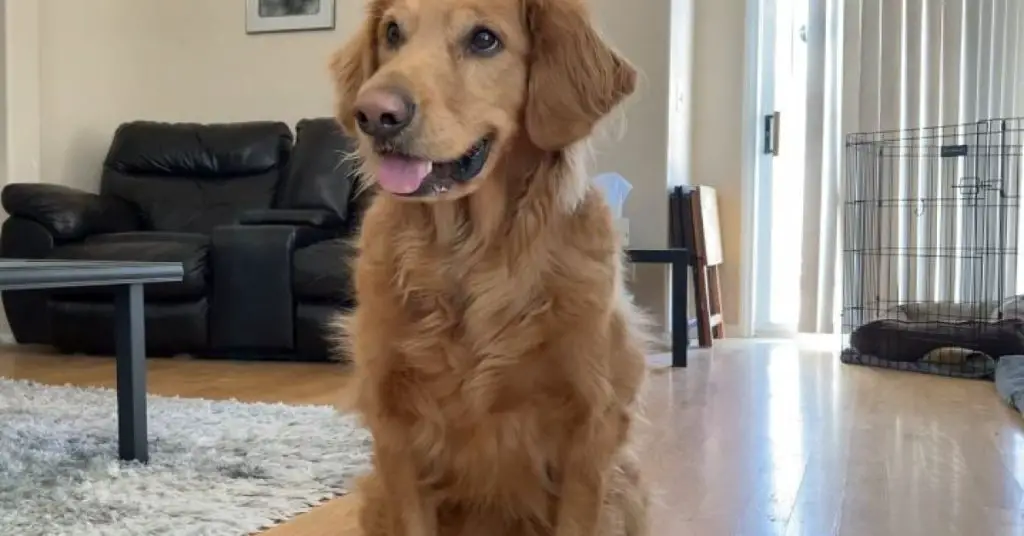
To calm a dog’s breathing, create a calm environment with minimal distractions. Stay calm yourself, speaking softly and avoiding any signs of anxiety. Engage in gentle petting or massage, soothing your dog’s back or fur. Take slow, deep breaths to encourage your dog to do the same.
Use calming cues like “calm down” in a reassuring tone. Provide a comfortable space with soft bedding where your dog can rest. Identify and remove any triggers that may cause anxiety or stress for your dog.
Understanding Dog’s Breathing
Before delving into calming techniques, it’s essential to understand a dog’s normal breathing pattern. A healthy dog at rest should breathe between 15 to 30 times per minute. However, this rate can increase with exercise, excitement, or stress.
Rapid breathing, also known as tachypnea, or panting, is a dog’s natural way to cool down or cope with stress. However, if the rapid breathing is persistent, it could indicate a health problem, and immediate veterinary attention is required.
Techniques to Calm a Dog’s Breathing

- Create a Calm Environment: Dogs often mirror the energy in their environment. A calm, quiet space can help reduce a dog’s anxiety and, in turn, slow their breathing. Avoid loud noises and sudden movements that might startle your pet.
- Gentle Stroking: Physical contact can be very soothing for dogs. Gentle stroking, particularly along the spine or behind the ears, can help calm your pet and slow their breathing.
- Controlled Exercise: Regular, controlled exercise can help regulate a dog’s breathing. However, it’s essential to avoid over-exertion, especially in hot weather, as this can lead to panting.
- Use of Calming Aids: Products like anxiety wraps or calming pet diffusers can help soothe a dog’s nerves. These products work by applying gentle, constant pressure or releasing calming pheromones, respectively.
- Training and Desensitization: If your dog’s rapid breathing is due to specific triggers like thunderstorms or car rides, desensitization and counter-conditioning techniques can be beneficial. Gradually exposing your dog to these triggers in a controlled way can help them become less reactive over time.
- Deep Breathing Exercises: Just as deep breathing exercises can help humans relax, they can also help dogs. Encourage your dog to take deep breaths by using a calm and soothing voice.
Dog Breathing Problems Home Remedies
Here are a few home remedies for dog breathing problems that may offer relief:
- Humidifier: Using a humidifier in the room where your dog spends most of its time can help moisten the air, making it easier for them to breathe.
- Steam treatment: Create a steam treatment by running a hot shower and allowing your dog to breathe in the moist air for a few minutes. Be cautious not to expose your dog to excessive heat or hot water to avoid burns.
- Elevated sleeping position: Providing your dog with an elevated bed or pillow can help improve breathing, particularly if they are experiencing congestion or nasal congestion.
- Gentle exercise: Engaging your dog in light exercise, such as short walks, can help promote better breathing and reduce respiratory distress. However, ensure not to overexert your dog, and monitor their breathing during the activity.
- Avoid triggers: Identify and minimize exposure to potential allergens or irritants that could be causing your dog’s breathing problems. This may include cigarette smoke, strong chemicals, dust, or certain types of pollen.
Remember, these home remedies are not a substitute for veterinary care. If your dog is experiencing persistent or severe breathing difficulties, it’s crucial to seek professional veterinary advice. They will be able to diagnose the underlying cause of the breathing problems and recommend appropriate treatment options to address the specific condition.
When to Seek Veterinary Attention
While the techniques above can help calm a dog’s breathing in many cases, it’s crucial to recognize when professional help is needed. If your dog’s rapid breathing is accompanied by symptoms like blue gums, coughing, wheezing, or if they seem lethargic or unresponsive, seek immediate veterinary attention. These could be signs of serious conditions like heart disease, lung disease, or heatstroke.
Final Thoughts
Understanding how to calm a dog’s breathing is an essential skill for pet owners. By creating a calm environment, using gentle physical contact, controlled exercise, calming aids, training, and deep breathing exercises, you can help soothe your pet’s rapid breathing. However, always be aware of the signs that indicate a need for professional help, and don’t hesitate to seek veterinary attention when necessary. Your dog’s health and comfort should always be the top priority.